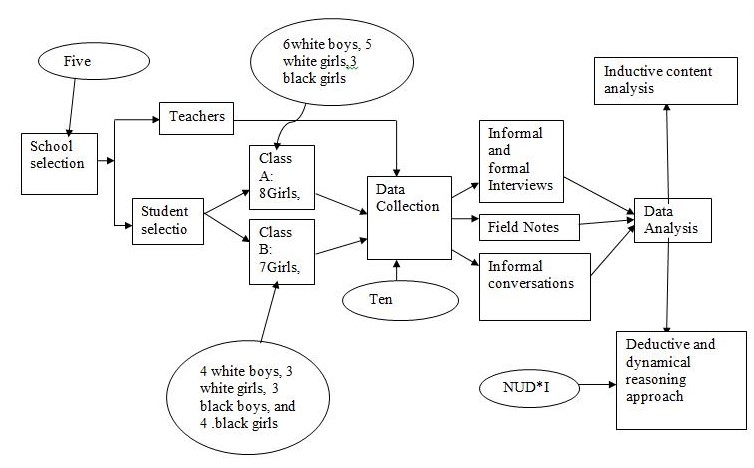This is a qualitative study report that uses the feminist poststructuralist theory and a qualitative ethnographic design.Azzarito and Solmon (2006) state that in this study, a qualitative ethnographic research design was utilized to address the research questions presented in this paper.
The purpose of this study is to investigate how students view the construction of their bodies in relation to physical education and how students’ meanings of their bodies affect their participation or resistance to physical education. The authors made it important by using the study to destabilize gendered dominant discourses of mass media body culture and to develop positive, meaningful, and empowering student physicality. This was easily done by doing direct interviews with the students and the results made it an important case.
The topic fit perfectly well as compared to the existing literature. This is because the study is based on the feminist poststructuralist theory. The study is used to find out what meanings the students have on their bodies and its effect on their participation and compliance or resistance in physical education and what should be done to transform gendered dominant discourses of mass media body culture to develop a positive, meaningful and empowering physicality.
The author is a member of the research team whose values are based on the feminist poststructuralist theory. The author thinks that physical education is not done correctly or is done based on each students’ view on its effect on their bodies. The author wants to develop a meaningful physicality. The author gives a summary of the site of the study and the identity of the participants. The participants were high school students in four ninth grade physical education classes in two schools. In total, there are twenty eight participants, fourteen from each school. There were fifteen girls and thirteen boys; there were 18 white students and 10 black students. These four classes were selected after a pilot study that included six classes from three schools for five weeks. The third school was excluded because of students’ high lack of participation in physical education. The students were representative of gender and ethnic diversity, different body sizes and shapes, skill level observed and student engagement levels in each observed physical education class.
The study took place in two public schools; Walters High School and Molson High School. Walters High School is a suburban school that has predominantly white students. The two classes observed were coeducational physical classes. Molson High School is located in a rural area. It has an approximately 50%White and 50%Black student population. The two classes observed here were a single sex boys’ class and a single sex girls’ class.
Data constituted field notes, formal and informal student interviews, informal conversations with teachers, and formal follow-up student interviews. Teachers’ and students’ informal interviews took place either at the beginning or at the end of the lessons. The researcher took written notes after these conversations. Primary researcher collected field notes for ten weeks and a second researcher visited the sites twice and discussed data reports to enhance validity of the field notes.
An inductive content analysis was used by using research questions to look for patterns in the data. A multiple analyst technique was also used to check and expand on the first categorization process by limiting researchers’ bias on the data and enhance multiple perspectives on transcript for data interpretation. Another level of analysis that was used was the NUD*IST qualitative program. It is a deductive and inductive dynamical reasoning approach that organizes all the categories.
There were two themes that resulted from this study; sites of compliance to dominant discourses of the gendered body-comfortable and ‘bad bodies’ and the second is sites of resistance to disciplinary practices in physical education-borderland bodies. In comfortable bodies, students engaged in physical education when the practices upheld meanings about their meanings about their bodies, and viewed these practices as transformative so as to maintain or to achieve the female slender body or the male muscular body. Bad bodies are those students who are dissatisfied with their bodies. They have also internalized gendered ideals about the body through the mechanism of self-surveillance. In sites of compliance resistance, the students rejected dominant discourses about the body and did not view physical education practice as technologies for achieving the feminine slender or masculine male ideal body.
Using a poststructuralist framework, the study shows by linking body meanings to physical education, students participated in physical education when the practices supported their own body narratives and sense of self, and disengaged from physical education purposes when these practices clashed with their construction of bodily meanings. The study is important because a positive self-concept is developed when individuals have positive and meaningful experiences, therefore making it important to address the challenges dominant discourses about the body to allow students to experience and develop positive and empowering physicality.
The author raised several issues to be cautious about. The researcher’s position a s an outsider, a nonparticipant observer, so as not to have any bias. To enhance validity for the field notes, the second researcher visits the sites twice and discusses the data reported on the field notes with the primary researcher. The use of multiple analyst technique was used to limit the researchers’ bias on the data and enhance multiple perspectives on the transcript for interpretation of data.
The research was very important because it is a world worldwide factor that affects many students and adults too. It enables people to understand what is important and what is not then it comes to body cultural meanings, and also stresses the importance of physical education in the school system. It is interesting to actually relate to the results as to why one actually does exercise or take part in sports or physical education. The positivity in this research is very important because it does not declare any of our body meanings wrong, it changes the way we look at physical education with effect to our bodies.
